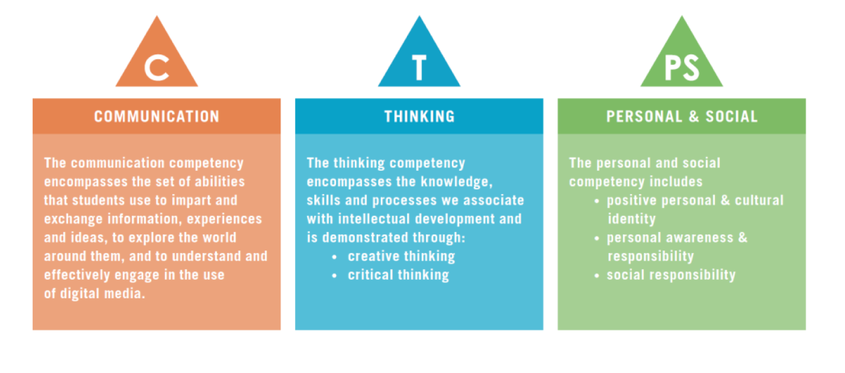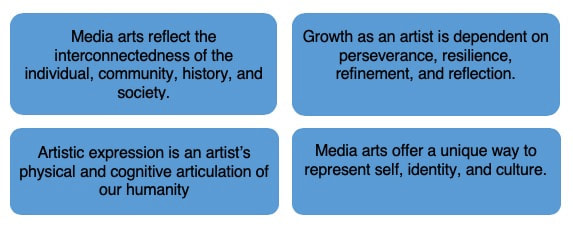"WHO WE ARE" FILM MAKING FOR THE 21ST CENTURY
As members of Surrey Schools, we would like to humbly acknowledge that we live, work, play and engage in the act of education on the stolen, unceded and traditional shared territories of the hən̓q̓əmin̓əm̓-speaking q̓əc̓iy̓ (Katzie) and q̓wa:n̓ƛ̕ən̓ (Kwantlen) Coast Salish peoples and the North Straits Salish-speaking Semiahmoo Coast Salish peoples.
Indigenous Perspectives: Indigenous knowledge and perspectives are an important part of the historical foundation of both BC and Canada and are integrated into every subject in our curriculum. All students will have opportunities to better understand and respect a variety of cultures, both their own and others.
Indigenous Perspectives: Indigenous knowledge and perspectives are an important part of the historical foundation of both BC and Canada and are integrated into every subject in our curriculum. All students will have opportunities to better understand and respect a variety of cultures, both their own and others.
DESCRIPTION:
Level: Grade 11 or 12
Course: 8 credits
Description: This course is designed for students that have taken a media arts course already and have a keen desire to create work with like-minded individuals. This course is an intensive experience where creativity, dedication to craft and cooperative learning are celebrated and encouraged. Students will explore their place in our school, our community and our planet to plan and produce a film that highlights their skills in film making.
Program Outline:
This course would draw students who are interested in any of the following areas of study:
Course: 8 credits
Description: This course is designed for students that have taken a media arts course already and have a keen desire to create work with like-minded individuals. This course is an intensive experience where creativity, dedication to craft and cooperative learning are celebrated and encouraged. Students will explore their place in our school, our community and our planet to plan and produce a film that highlights their skills in film making.
Program Outline:
- Course will be a half day in the semester system.
- Students will study Media Arts – Video and choose a focus in one other course from the following list:
- Media Arts – Animation
- Photography
- Visual Arts - Graphics
- Students will practice and develop skills through small projects and will complete a final video project that defines WHO WE ARE.
- Opportunity to develop skills in a variety of digital software and create projects that use both digital courses to complete
- Field trips (if possible) and studies specific to digital media outlets such as CBC, BroadBandTV, Atomic Studios, etc.
- Group projects designed to replicate a workplace environment
- Opportunity to create and develop personal projects
- Development of digital portfolio to assist with post-secondary applications
This course would draw students who are interested in any of the following areas of study:
- Visual arts
- Media tech
- Digital photography
- Animation
- Film & television
CORE COMPENTENCIES:
COURSE BIG IDEAS:
COURSE CONTENT:
TECHNICAL SKILLS:
AESTHETICS:
SEMANTICS:
This course will help you develop an understanding of the personal, social, cultural and historical contexts in which meaning is created and communicated through moving image production. The skills gained through the production, analysis, and in the making of digital media are invaluable in the understanding and appreciation of visual communication.
- Image development with 2-d and 3-d animation software
- Image development with non-digital formats
- Lighting
- Using the library and internet as research tools
- Planning using character sketches, scripts and storyboards
- Create a portfolio of animation techniques and projects throughout the semester
AESTHETICS:
- Cultivate a critical and aesthetic visual “way of seeing.”
- Analyze, explain and justify the use of the elements and principles of art and design in the production of your animations.
SEMANTICS:
This course will help you develop an understanding of the personal, social, cultural and historical contexts in which meaning is created and communicated through moving image production. The skills gained through the production, analysis, and in the making of digital media are invaluable in the understanding and appreciation of visual communication.
CURRICULAR COMPETENCIES:
Students are expected to be able to do the following:
Explore and create
Reason and reflect
Communicate and document
Connect and expand
Explore and create
- Create media art using sensory inspiration, imagination, and inquiry
- Explore artistic possibilities and take creative risks using various sources of inspiration
- Create artistic works with an audience in mind
- Create artistic works to reflect personal voice, story, and values
- Develop and refine skills and techniques in creating media artwork
- Demonstrate safe and responsibleuse of materials, tools, and work space
Reason and reflect
- Identify ways to resolve creative challenges
- Describe and analyze how artists use materials, technologies, processes, and environments in media arts
- Recognize and evaluate creative choices in the planning, making, interpreting, and analyzing of media artworks
- Develop personal answers to aesthetic questions
- Reflect on the influences of a variety of contexts on artistic works
Communicate and document
- Document, share, and appreciate media artworks in a variety of contexts
- Communicate ideas and express emotions through art making
- Demonstrate respect for self, others, and place
- Communicate and respond to social and environmental issues using media art
Connect and expand
- Explore First Peoples perspectives and knowledge, other ways of knowing, and local cultural knowledge through media arts
- Engage in digital citizenship throughout the creative processes Connect with others on a local, regional, and national scale through photography
- Demonstrate safe and responsible use of materials, equipment, and work space
ASSESSMENT AND EVALUATION:
Students will produce projects and portfolio work in a variety of subject areas. The goal of every assignment is personal and technical growth. Assessment will involve the following methods:
- Teacher evaluation based on project criteria
- Self-assessment based on curricular competency
- Self-assessment based on personal goals and learning
- Peer critique and discussion
EQUIPMENT AND SUPPLIES:
Students will be provided cameras, tripods, SD cards and access to lighting equipment for use in class. Any student is welcome to bring their own camera. However, the school cannot take any responsibility for equipment brought from home. Students are expected to treat equipment with care and will be responsible for cameras and other equipment while in class.


